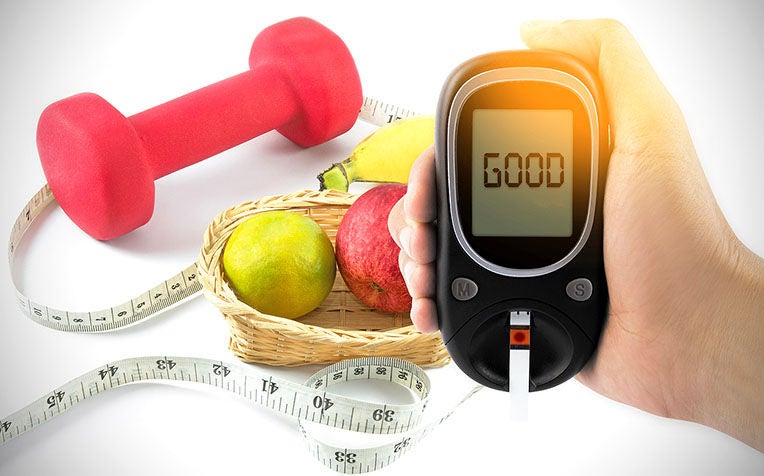
Cholesterol and diabetes can be managed together with regular exercise, a healthier diet and regular monitoring of blood sugar and cholesterol levels.
If you have heard of the term ‘三高’ in Mandarin, you probably already know the three highs that everyone is afraid of. If you haven’t heard of the term, it refers to these three conditions:
High blood pressure (hypertension)
High blood sugar (or hyperglycemia, a symptom of diabetes),and
High cholesterol (hyperlipidaemia)
If you have both high cholesterol and are a patient suffering from diabetes, we are here to help!
It may seem like a daunting task at first, but here are some tips that can help you keep these two conditions at bay. The first step is usually the hardest, but once you make a habit of these tips, managing diabetes and high cholesterol no longer seems like such a high wall to climb.
1. Exercise!
This might seem like a cliché, but trust us, your health is worth more than a cliché. Regular aerobic exercise can help keep both conditions in check. Referred to in layman’s terms as ‘cardio exercises’, aerobic exercise refers keeping your heart rate up for longer periods of time. Some examples of activities are:
Brisk walking,
Jogging,
Swimming or
Cycling
Specific to diabetes and high cholesterol, aerobic exercises not only help in boosting HDL cholesterol and lower LDL cholesterol, it also helps by lowering HbA1c levels.
2. Exercise! Again?!
Besides aerobic exercises, also try to incorporate some anaerobic exercises into your routine. Anaerobic exercises, more commonly referred to as strength training exercises, involve maximum efforts for short periods of time. Some examples of such activities are:
Weight-lifting,
Sprinting or
The current ‘It’ activity, HIIT (High-intensity Interval Training)
Anaerobic exercises have been shown to lower LDL levels, and the muscle build-up lowers blood glucose as well.
3. Watch that diet
Chances are that if you are reading this article, you probably are already on some kind of diet to manage diabetes. Well, the good news is that to manage cholesterol as well, you can largely stick to that diet, with some refinements.
Add more heart-healthy food to your diet. Items like fish that are rich in omega-3 fatty acids, nuts, and wholegrains.
Read our article on "Superfoods to Protect Your Heart" to find out more!
4. Watch those numbers
Regular monitoring of your blood sugar and cholesterol levels lets you know how well you have been managing your health so far. If all the numbers look good, give yourself a pat on the back!
If not, it lets you know that something needs to be changed, and if you are monitoring regularly, it will not be too late to make changes. Here are some targets you should be aiming for if you have not already achieved them.
Blood glucose levels
| Test | Targets |
|---|---|
| Pre-meal glucose | 4.0-7.0 mmol/L |
| 2 hours post-meal glucose | < 10.0 mmol/L |
Cholesterol levels
Total cholesterol less than 200 milligrams per deciliter (mg/dL) or 5.2 mmol/L
LDL cholesterol less than 130 mg/dL or 3.3 mmol/L
HDL cholesterol greater than 40 mg/dL or 1.0 mmol/L
If you have been keeping within these two ranges for blood glucose and cholesterol, do not rest on your laurels. While it might be well-deserved to let yourself go and feast once in a while, the numbers fluctuate and a single good reading does not give you a free pass to go all out and gorge yourself.
5. Quit smoking
A common misconception is that smoking only affects the lungs. However, that little stick does more than just leave tar in your lungs.
Studies have shown that it also LOWERS your HDL, and creates increased insulin resistance. Insulin is the hormone that helps the body regulate blood sugar. So smoking DOES negatively impact both your cholesterol AND your blood sugar levels, not good news for someone who is managing both diabetes and high cholesterol.
And that is not even counting the host of other effects that a cigarette has on the body. So, simply put, snub out that light today.
How diabetes and cholesterol levels are related
Diabetics often find that they also suffer from high cholesterol levels, and this is not an uncommon occurrence. This is a condition known as diabetic dyslipidemia, and many of those with Type 2 diabetes are diagnosed with this as well. Studies have shown that diabetes:
Raises low-density lipoproteins, also known as ‘bad’ cholesterol or LDL
Raises triglycerides, also known as fat particles
Lowers high-density lipoproteins also known as ‘good’ cholesterol or HDL (don’t get excited or confused, HDL here does not refer to popular hotpot chain Hai Di Lao!)
Want to lower your triglycerides but don't know how to? Here are 6 ways!
This is also the reason why diabetics are often at a higher risk of heart disease and stroke.
Now that you know the relationship between diabetes and cholesterol, as well as our handy tips to manage both conditions, start by making small changes to your lifestyle. With a little self-discipline, managing your condition will quickly turn into a habit. And once you get the hang of it, it won’t seem like such a chore anymore.
Take the first step to living your best life today by starting RIGHT NOW!
Ref: J22
Here are more articles on cholesterol and diabetes:
Diabetes: 8 Steps for a Healthy Diet

















 Get it on Google Play
Get it on Google Play